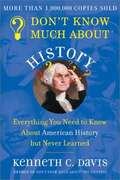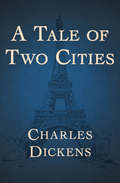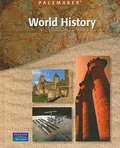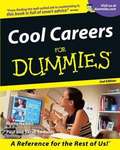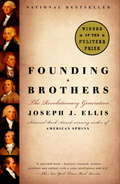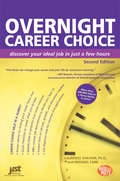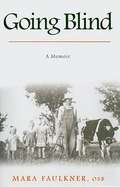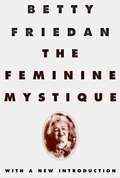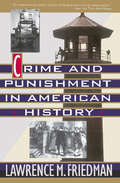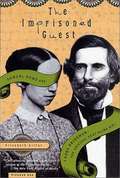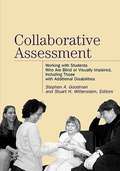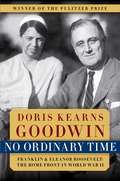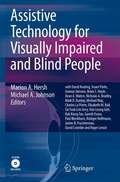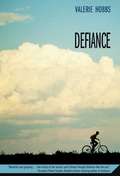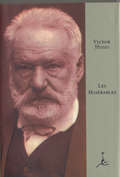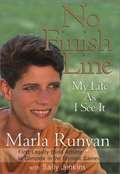Special Collections
Hadley School for the Blind Collection
Description: Recommended Reads for students at Hadley School for the Blind #disability #adults
- Table View
- List View
The Abacus Made Easy
by Mae E. DavidowFrom the book: At Overbrook, [School for the Blind] Dr. Davidow was instrumental in establishing the use of the Cranmer Abacus as a part of the regular curriculum. Her enthusiasm for this pioneer method of teaching mathematics led others to adopt the use of the abacus. In her role as coordinating teacher, she worked with the members of the Mathematics Department and the results were highly successful. Hopeful that this success at Overbrook might be experienced by many teachers elsewhere, she was encouraged to write this manual. Her goal was to write a clear, simple manual which could be used by teachers or students. This book represents her achievement.
Don't Know Much About History
by Kenneth C. DavisThe author describes the rollicking ride through more than 500 years of American history. In this updated edition of the classic anti-textbook, he debunks, recounts, and serves up the real story behind the myths and fallacies of American history.
A Tale of Two Cities
by Charles DickensThe premier novel of the French Revolution, by England&’s greatest authorSet against the bloodthirsty backdrop of revolutionary France, this monumental saga—one of the most famous works in all of literature—is at its heart the story of a beautiful woman and the two men who compete for her love: Charles Darnay, a French aristocrat who renounces his heritage, yet stands accused of treason in the rush to the guillotine, and Sydney Carton, a disillusioned English barrister who finds his salvation in the ultimate act of sacrifice.Full of rich historical details and populated by a sprawling cast of characters, Charles Dickens&’s masterwork is epic in every sense of the word. Yet its finest achievement may be the intimate moments shared by three people who have the foresight and the courage to see beyond the chaos that surrounds them. A novel whose contradictions are laid bare from the very start—&“It was the best of times, it was the worst of times&”—A Tale of Two Cities is the stuff of life, and great art. This ebook has been professionally proofread to ensure accuracy and readability on all devices.
Cool Careers for Dummies (2nd edition)
by Marty Nemko and Paul Edwards and Sarah EdwardsIs your career path unclear? Are you stuck in a job you hate? Don't worry! Now revised and updated, this friendly guide helps you think outside the box and find a job you'll actually like. Written by a trio of renowned job- counseling experts, it's like having your very own dream team of career coaches! Marty Nemko has career coached 1,600 clients. His column appears in the classified section of the LA. Times and on Monster.com. Paul and Sarah Edwards career and self-employment books have sold over 1 million copies. Discover how to: *Locate and land terrific jobs *Get the training you need *Locate jobs, even if you hate networking *Become an employer's #1 job candidate *Make a humdrum job better.
Founding Brothers
by Joseph J. EllisPULITZER PRIZE WINNER • NATIONAL BESTSELLER • A landmark work of history explores how a group of greatly gifted but deeply flawed individuals—Hamilton, Burr, Jefferson, Franklin, Washington, Adams, and Madison—confronted the overwhelming challenges before them to set the course for our nation.&“A splendid book—humane, learned, written with flair and radiant with a calm intelligence and wit.&” —The New York Times Book ReviewThe United States was more a fragile hope than a reality in 1790. During the decade that followed, the Founding Fathers—re-examined here as Founding Brothers—combined the ideals of the Declaration of Independence with the content of the Constitution to create the practical workings of our government. Through an analysis of six fascinating episodes—Hamilton and Burr&’s deadly duel, Washington&’s precedent-setting Farewell Address, Adams&’ administration and political partnership with his wife, the debate about where to place the capital, Franklin&’s attempt to force Congress to confront the issue of slavery and Madison&’s attempts to block him, and Jefferson and Adams&’ famous correspondence—Founding Brothers brings to life the vital issues and personalities from the most important decade in our nation&’s history.
Overnight Career Choice
by Michael Farr and Laurence ShatkinThis book provides more than 275 job descriptions with information on each job's pay, growth, openings, education level, and skills needed. Additional information about major industries opens readers' eyes to different sectors where they may be able to build a rewarding career.
Going Blind
by Mara FaulknerMara Faulkner grew up in a family shaped by Irish ancestry, a close-to-the-bone existence in rural North Dakota, and the secret of her father's blindness--along with the silence and shame surrounding it. Dennis Faulkner had retinitis pigmentosa, a genetic disease that gradually blinded him and one that may blind many members of his family, including the author.
Moving and insightful, Going Blind explores blindness in its many Permutations-within the context of the author's family, more broadly, as a disability marked by misconceptions, and as a widely used cultural metaphor. Mara Faulkner delicately weaves her family's story into an analysis of the roots and ramifications of the various metaphorical meanings of blindness, touching of the Catholic Church of the 1940s, and 1950s, Japanese internment, the Germans from Russia who dominated her hometown, and the experiences of Native people in North Dakota.
Neither sentimental nor dispassionate, the author asks whether it's possible to find gifts when sight is lost.
Pacemaker General Science (3rd edition)
by Globe FearonThis book teaches about three different areas of science: life science, physical science, and earth science. You will learn about living things, including plants and animals. You will study motion and forces, such as those that affect a thrown baseball and a roller coaster racing along on its track. You will come to better understand the features of the Earth, including its oceans and moon. When you finish this book, you will be prepared to continue studying any field of science you choose. You will be on the road to success in the 21st century.
A Hand Well Played
by Anne Hobson FreemanAn engaging and inspirational biography of Jim Wheat, a blind investment banker who built a prominent brokerage firm.
The Feminine Mystique
by Anna Quindlen and Betty FriedanThe book that changed the consciousness of a country -- and the world. "The Feminine Mystique", is the book that defined "the problem that has no name", and that launched the Second Wave of the feminist movement, and has been awakening women and men with its insights into social relations, which still remain fresh, ever since.
Crime And Punishment In American History
by Lawrence FriedmanIn a panoramic history of our criminal justice system from Colonial times to today, one of our foremost legal thinkers shows how America fashioned a system of crime and punishment in its own image.
Franchising
by Richard Lloyd and Frederick H. Gerlach and Philip F. Zeidman and Hanns Peter MuthSPECIAL NOTE: The original text of this book is in a format similar to an outline but without an outline's conventions. In order to follow the author's intent the following has been adopted to clarify sentences and paragraphs that are subordinate to preceding text. A chapter's primary sentences and/or paragraphs are preceded by a single asterisk(*). A sentence or paragraph that is subordinate to the single asterisk sentence/paragraph will have two asterisks(**). A sentence that is subordinate to the one with two asterisks will have three asterisks(***) and so on. Ask most people what a franchise is and they will likely reply McDonalds or Burger King. This book outlines the many types of franchises available and serves a a primer for anyone interested in going into business for themselves. It includes information on both domestic and international franchising and provides guidance on getting in to franchising as a franchisor or a franchisee. It also provides insights about potential pitfalls.
The Imprisoned Guest
by Elisabeth GitterDid you ever wonder what inspired Helen Keller's mother to have such high hopes for her daughter? The answer is Laura Bridgman, the original deaf-blind girl who inspired Charles Darwin to visit her and also write about her in American Notes.
Collaborative Assessment
by Stephen A. Goodman and Stuart H. WittensteinThis comprehensive text published by AFB in 2003 is the first to present assessment in a way that can be understood by professionals and families alike.
No Ordinary Time
by Doris Kearns GoodwinDoris Kearns Goodwin&’s Pulitzer Prize–winning classic about the relationship between Franklin D. Roosevelt and Eleanor Roosevelt, and how it shaped the nation while steering it through the Great Depression and the outset of World War II.With an extraordinary collection of details, Goodwin masterfully weaves together a striking number of story lines—Eleanor and Franklin’s marriage and remarkable partnership, Eleanor’s life as First Lady, and FDR’s White House and its impact on America as well as on a world at war. Goodwin effectively melds these details and stories into an unforgettable and intimate portrait of Eleanor and Franklin Roosevelt and of the time during which a new, modern America was born.
The Fifties
by David HalberstamA social, economic, political and cultural history of the post-World-War II period which impacted the decade of turbulence that followed.
University of Courage
by Donald Wing HathawayA warmly written history by a man who loved his subject and his work with Hadley. "And so as we reach the end of our story, we find ourselves dreaming--as William Allen Hadley once dreamed--of life made more abundant through knowledge, and of hope made reality through perseverance. How strangely life can exceed the boldest dream! Could William Hadley possibly have conceived that his University of Courage would one day reach out to blind persons all over the earth in a true universality of courage, within a world of work in which all may share? Can we today set limits on horizons that only continue to expand?
Assistive Technology for Visually Impaired and Blind People
by Marion A. Hersh and Michael A. JohnsonEqual accessibility to public places and services is now required by law in many countries. In the case of the vision-impaired, it is often the use of specialised technology which can provide them with a fuller enjoyment of all the facilities of society from large scale meetings and public entertainments to the more personal level of reading a book or making music. In this volume the engineering and design principles and techniques used in assistive technology for blind and vision-impaired people are explained. Features:· instruction in the physiology of the human visual system and methods of measuring visual ability;· explanation of many devices designed for every-day living in terms of generic electrical engineering principles;· sections of practical projects and investigations which will give the reader ideas for student work and for self teaching;· contributions by authors of international repute from divers fields which co-operate under the banner of assistive technology, among them: artificial vision systems; psychology, haptics, electrical engineering, design and visual physiology. Assistive Technology for Vision-impaired and Blind People is an an effective means of maintaining the currency of knowledge for engineers and health workers working to provide devices and/or services for people with sight loss and an excellent source of reference for students working in assistive technology and rehabilitation.
Defiance
by Valerie HobbsEleven-year-old Toby Steiner wants to do normal things on his vacation. He wants to hike and race his bike down the hill. He wants to learn to fish out on the lake. He doesn't want to return to the children's hospital where his painful cancer treatment finally ended. When Toby starts spending time with Pearl, a spunky old woman who lives on a nearby farm, and Blossom, her broken-down cow, he sees all the more reason to keep the new lump on his side a secret from his parents. From Pearl he discovers the beauty of poetry, and from Blossom he just might uncover the meaning of life.
Les Misérables
by Victor Hugo and Charles E. WilbourLes Miserables is the great epic masterpiece of the mid-nineteenth century. Begun in 1845, the year Louis Philippe conferred a peerage and a lifetime seat in the Senate upon Victor Hugo, it was completed when the author was living in exile in the Channel Islands. Les Miserables is a product as well as a document of the political, social, and religious upheaval that followed the Napoleonic Wars and Europe's great democratic revolutions. The story is centered on Jean Valjean, a peasant who enters the novel a hardened criminal after nineteen years spent in prison for stealing a loaf of bread for the starving children of his sister. The path of Valjean's last twenty-five years, leading from the French provinces to the battlefield of Waterloo and the ramparts of Paris during the Uprising of 1832, introduces us to secret societies of revolutionaries and the vast world of the French lower classes. Jean Valjean's flight from the police agent Javert--the prototype of over a hundred years of fictional detectives--culminates in one of the most famous scenes in all literature, the chase through the sewers of Paris. Les Miserables sold out its large first printing in twenty-four hours and has remained enormously popular. This edition is the classic English translation of Hugo's friend Charles Wilbour, which appeared the same year the novel was published in France.
A People's History of the Supreme Court
by Peter IronsIrons, a civil liberties lawyer and history professor, brings to life the common people whose real-life circumstances proved precedent setting in Supreme Court decisions. He focuses on the human aspect of decisions, from the impact of the slave trade and related issues in the formation of the nation to the contradictory values of the founding fathers and subsequent lawmakers. Irons reveals that the Bill of Rights was not central to the views of one founder, James Madison; the focus on individual rights was actually a compromise designed to secure ratification of the Constitution. Irons examines how the law has intersected with politics, from the passage of the Thirteenth, Fourteenth, and Fifteenth amendments during the radical reconstruction period through the Jim Crow era, when blacks were stripped of previously adjudicated rights. Irons clearly and repeatedly shows how the law reflects political reality above esoteric legal mandates. Irons continues his analysis to 1992, with case histories exploring the political context of the times. His work gives contextual richness to the history of an important American institution.
No Finish Line
by Sally Jenkins and Marla RunyanMarla Runyan was nine years old when she was diagnosed with Stargardts disease, an irreversible form of macular degeneration. With the uneasy but unwavering support of her parents, she refused to let their diagnosis limit her dreams. Despite her severely impaired, ever-worsening vision, Marla rode horseback and learned to play the violin. And she found her true calling in sports. A gifted and natural athlete, Marla began to compete in the unlikeliest event of all: the heptathlon, the grueling womens equivalent of the decathlon, consisting of seven events: the 200-meter dash, high jump, shot put, 100-meter hurdles, long jump, javelin throw, and 800-meter run. In 1996, she astonished the sports world by qualifying for the U.S. Olympic Trials, in which she broke the American record for the heptathlon 800. It was then that she decided to concentrate on her running. Four years of intense effort paid off: in 2000, she qualified for the U.S. Olympic team by finishing third in the 1500 meters. In Sydney, she placed eighth in the finals and was the top American finisherthe highest womens placing for the United States in the events history. Not long after her return to the States, she shattered the American indoor record for the 5000 meters. With endearing self-deprecation and surprising wit, Marla reveals what its like to see the world through her eyes, how it feels to grow up disabled in a society where expectations are often based on perceived abilities, and what it means to compete at the world-class level despite the fact thatquite literally, for herthere is no finish line.

